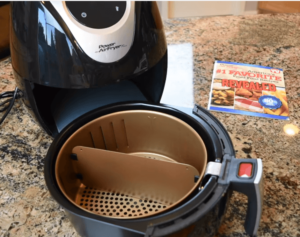Last Updated on February 19, 2024
Freezing garlic and ginger paste is an ingenious kitchen hack for those looking to preserve the freshness and flavor of these essential cooking ingredients. Whether you’re a culinary enthusiast or a busy home cook, understanding the benefits and methods of freezing garlic and ginger paste can transform your cooking routine.
This guide delves into the reasons why freezing these pastes is beneficial and provides a step-by-step method to do it properly. Embracing this technique means always having these key ingredients at hand, ready to elevate your dishes with their robust flavors.
Why Freeze Garlic and Ginger Paste?
Freezing garlic and ginger paste is not just convenient; it’s a strategic move for any kitchen. These pastes are staples in numerous cuisines, known for their ability to impart deep, aromatic flavors to dishes. However, preparing them afresh each time can be time-consuming. By freezing, you retain their fresh taste and nutritional value for more extended periods, eliminating the need for frequent preparation. This approach is particularly helpful for those who lead busy lifestyles or do not use these pastes daily.
Moreover, freezing in small portions allows for easy usage, reducing waste and ensuring you have the right amount for your recipes. Additionally, this method is a boon for seasonal cooks who prefer to prepare pastes from fresh, home-grown produce during harvest season and enjoy their flavors year-round.
How to Properly Freeze Garlic and Ginger Paste
- Prepare Fresh Paste: Start by making your garlic and ginger paste. Use fresh ingredients for the best flavor. Blend equal parts of peeled ginger and garlic in a food processor until smooth.
- Portion the Paste: To make the paste easy to use, portion it out. Use an ice cube tray or a lined baking sheet for this. Spoon the paste into the tray or drop dollops onto the baking sheet.
- Freeze Initial Portions: Place the tray or sheet in the freezer. Freeze until the paste is solid, which should take about 2-3 hours.
- Transfer to Freezer-Safe Bags: Once frozen, quickly transfer the garlic and ginger paste cubes or dollops into freezer-safe bags. Remove as much air as possible to prevent freezer burn.
- Label and Store: Label the bags with the date of freezing. The paste can typically be stored for up to 6 months.
- Use as Needed: Remove the required number of paste portions when cooking. They can be added directly to the pan; thaw is unnecessary.
Tips for Preparing Garlic and Ginger Paste for Freezing
When preparing garlic and ginger paste for freezing, the quality and freshness of your ingredients play a crucial role. Begin by selecting the freshest garlic and ginger available. This not only ensures a robust flavor but also extends the shelf life of your frozen paste. To create the paste, you can either combine garlic and ginger or process them separately, depending on your culinary needs. Using a food processor, blend them until they form a smooth, homogenous mixture.
- Select Fresh Ingredients: Start with fresh, high-quality garlic and ginger for the best flavor and longevity.
- Creating the Paste: Process the garlic and ginger separately or together, depending on your preference, until they reach a smooth consistency.
- Portioning: Divide the paste into small portions. Ice cube trays or small containers are ideal for this.
- Avoiding Oxidation: Add a small amount of oil or lemon juice to prevent the paste from discoloration.
- Labeling: Mark the containers with the date of preparation to keep track of freshness.
Once the paste is ready, portioning becomes key. Freezing in small quantities ensures that you can thaw exactly what you need for a recipe, reducing waste. An efficient way to do this is by using an ice cube tray or small airtight containers, allowing easy portion control and quick thawing. Another important tip is to add oil or a splash of lemon juice to the paste before freezing. This step helps reduce oxidation, keeping the paste vibrant and fresh in flavor.
Lastly, don’t forget to label your containers with the date of preparation. This is crucial for tracking how long the paste has been stored, as it has a limited shelf life even in the freezer. Proper labeling helps maintain quality control and ensures you use the paste while it’s at its best. With these tips, your garlic and ginger paste will retain its freshness and be ready to use whenever needed.
Storing Frozen Garlic and Ginger Paste
Properly storing your garlic and ginger paste in the freezer is essential for maintaining its quality and longevity. The first step is to use airtight containers or freezer bags, which are crucial in preventing freezer burn and odor absorption. Freezer burn can negatively impact the texture and flavor of your paste, while odors from other foods can alter its taste.
- Airtight Containers: Use airtight containers or freezer bags to prevent freezer burn and odor absorption.
- Avoid Cross-Contamination: Store the paste away from other strong-smelling items in the freezer.
- Temperature Consistency: Keep your freezer constant to ensure the paste remains frozen solid.
- Stacking: If using flat containers or bags, stack them to save space in the freezer.
- Regular Checks: Periodically check the paste for any signs of freezer burn or spoilage.
Consider the paste’s position when placing it in the freezer. It’s advisable to store it away from foods with strong odors or flavors, as the paste can absorb these odors, changing its intended flavor profile. Additionally, maintaining a consistent temperature in your freezer is vital. Fluctuations in temperature can cause the paste to partially thaw and refreeze, which can degrade its quality over time.
Using flat containers or freezer bags can be a great space-saving solution for those with limited freezer space. These can be neatly stacked, maximizing your freezer’s storage capacity. However, ensure that each container or bag is properly sealed and labeled before stacking.
Regular checks of your frozen paste are also important. Over time, even in optimal conditions, the paste may show signs of freezer burn or spoilage. Periodic inspections will help you identify any issues early on and use the paste while it’s still at its best. By following these storage tips, your garlic and ginger paste will remain fresh and flavorful for an extended period, ready to add a burst of flavor to your dishes whenever required.
Thawing and Using Frozen Garlic and Ginger Paste
Refrigerator Thawing
Thawing frozen garlic and ginger paste in the refrigerator is an effective and safe method to retain its flavor and texture. This process involves transferring the frozen paste from the freezer to the refrigerator and allowing it to thaw gradually. The key benefit of refrigerator thawing is that it keeps the paste at a consistent, cold temperature, reducing the risk of bacterial growth that can occur at room temperature. This method is especially suitable for larger quantities of paste, ensuring even thawing throughout.
It typically takes several hours to overnight for the paste to thaw completely in the refrigerator, depending on the quantity. Planning ahead is crucial; if you know you’ll be cooking the next day, transfer the necessary amount of paste from the freezer to the fridge the night before. Once thawed, the garlic and ginger paste should be used within a day or two to ensure freshness and flavor. Remember, it should not be refrozen once thawed as this can affect its quality and safety.
Room Temperature Thawing
Thawing frozen garlic and ginger paste at room temperature is a quicker alternative to the refrigerator method. This technique is best suited for small quantities of paste that will be used immediately. To thaw, simply remove the required amount of paste from the freezer and let it sit at room temperature for about 30 to 60 minutes. However, monitoring the thawing process closely is crucial to avoid letting the paste sit out for too long, as prolonged exposure to warm temperatures can encourage bacterial growth.
Transferring the paste into a clean, dry container is recommended to prevent contamination when using the room temperature method. Stirring the paste occasionally can help it thaw evenly. Once the paste reaches a spreadable consistency, it’s ready to use in your cooking. Remember that this method is unsuitable for larger quantities, as the outer layers of the paste might start to spoil before the inner portions have fully thawed. Always prioritize food safety and discard any paste that has been left out for more than two hours.
Direct Usage
Using frozen garlic and ginger paste directly from the freezer is a convenient and time-saving option for busy cooks. This method eliminates the need for prior planning or thawing, as the paste can be used immediately in cooking. Direct usage is ideal for cooked dishes, as the heat from cooking will thaw the paste. Simply scoop out the required amount of frozen paste and add it directly to your pot or pan.
The intense flavors of garlic and ginger are well-preserved in frozen form, making this a great option for adding a burst of flavor to soups, stews, marinades, or stir-fries. The paste will melt and incorporate into the dish as it cooks. Adjust the quantity of paste slightly, as the concentrated flavors can be more potent when frozen.
Direct usage also ensures that there’s no waste, as you only use what you need and the rest remains frozen for future use. This method is particularly useful for individual cooks or small households, where smaller paste portions are typically used. Always ensure to use a clean spoon to scoop out the paste to maintain hygiene and prevent contamination.
Common Mistakes to Avoid When Freezing Garlic and Ginger Paste
Several common pitfalls can affect the quality and usability of frozen garlic and ginger paste. One such mistake is overfilling containers. It’s important to leave some space at the top of each container, as the paste will expand when it freezes. This prevents containers from cracking or lids from popping off, which can expose the paste to freezer burn.
- Overfilling Containers: Leave some space in containers for expansion during freezing.
- Using Old Ingredients: Freshness is key; avoid using old or sprouting garlic and ginger.
- Neglecting Hygiene: Ensure all utensils and containers are clean to prevent contamination.
- Ignoring Portion Sizes: Freeze in small, usable portions to avoid thawing excess paste.
- Forgetting to Label: Always label your containers with the preparation date.
Another key factor is the freshness of your ingredients. Using old or sprouting garlic and ginger can produce a paste with a diminished flavor and a shorter shelf life. Always opt for fresh, high-quality ingredients to ensure your frozen paste’s best taste and longevity.
Hygiene plays a crucial role in the preservation process. Before preparing the paste, ensure all utensils, containers, and your hands are clean. This prevents contamination and helps maintain the quality of your paste throughout its frozen storage.
Portion size is another area where many go wrong. Freezing the paste into small, manageable portions allows you to thaw only what you need for a particular recipe, reducing waste. Large blocks of frozen paste can be inconvenient and lead to unnecessary thawing and refreezing, which degrades the quality.
Finally, a common oversight is forgetting to label the containers with the date of preparation. This simple step helps you track how long the paste has been stored and ensures you use it while it’s still at its best. By avoiding these common mistakes, you can ensure that your garlic and ginger paste remains a convenient and high-quality addition to your culinary arsenal.
Alternative Methods for Preserving Garlic and Ginger Paste
Refrigeration
Refrigeration is one of the most straightforward and most accessible methods to preserve garlic and ginger paste. By storing the paste in an airtight container in the fridge, you can significantly extend its shelf life. The cold temperature slows down the growth of bacteria and mold, which are common causes of spoilage. To maximize freshness, using clean utensils when handling the paste is important. Refrigeration is ideal for short to medium-term storage, typically keeping the paste fresh for up to a month.
It’s also a convenient method for regular users, as the paste remains readily available for everyday cooking needs. Remember, the paste may thicken or slightly change texture when refrigerated, but this does not affect flavor or usability.
Dehydration
Dehydration is a traditional preservation method that removes moisture to extend food products’ shelf life. Dehydrating the garlic and ginger paste can transform it into a powder form, which can be reconstituted with water when needed. This method is excellent for long-term storage and is perfect for those who do not frequently use garlic and ginger paste but still want it available. Spread the paste thinly on a baking sheet and place it in a dehydrator or oven at a low temperature to dehydrate. Once completely dry, grind the dehydrated paste into a powder and store it in an airtight container. Dehydrated garlic and ginger powder retain most of the flavor and can be a convenient and space-saving alternative to fresh paste.
Oil Preservation
Preserving garlic and ginger paste in oil is another effective method, especially for adding an aromatic touch to dishes. Submerging the paste in oil helps keep out air and moisture, two primary causes of spoilage. Use a neutral oil, like vegetable or canola, to avoid altering the paste’s flavor. Fill an airtight container with the paste and pour enough oil over it to cover completely.
The oil acts as a barrier, protecting the paste from bacteria. This method can extend the shelf life of the paste for several weeks when stored in the refrigerator. Additionally, the infused oil itself becomes a flavorful ingredient, perfect for dressings, marinades, or sautéing. However, following food safety guidelines is crucial, as improper oil preservation can lead to harmful bacteria like botulinum growth.



